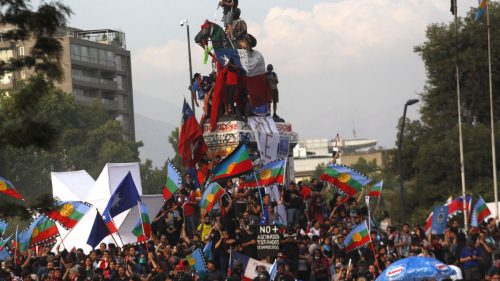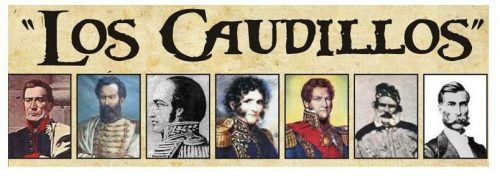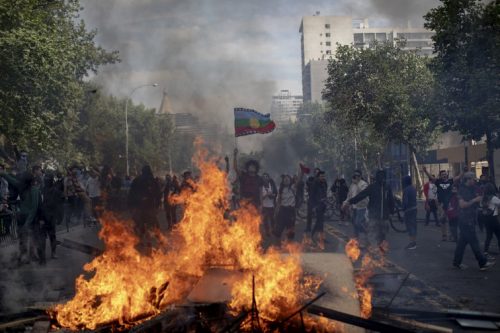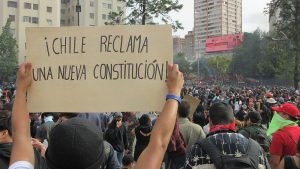Narrowed Research Focus: Chile’s Protests
How successful are mass-mobilized protests in changing public policy in Chile?
I am going to focus on Chile’s modern mass mobilization movements. For example in 2006 and 2011, Chile experienced some of the largest social movements to address the growing economic inequality. These protests included the takeover of public schools, mass gathering of students and workers, and other forms of civil disobedience. The focus of my research will be based on how effective these mass-mobilization tactics at promoting any institutional changes in Chile for students and workers.
For my primary sources I am going to use: Nacional Records. Shock. YouTube.Com, https://www.youtube.com/watch?v=177-s44MSVQ. October 4, 2011. 3:04.
For my secondary sources I intend to use:
Gómez-Barris, Macarena. “Sounds Radical: Ana Tijoux, Student Protests, and Palestinian Solidarity.” In Beyond the Pink Tide: Art and Political Undercurrents in the Americas, 22-45. Oakland, California: University of California Press, 2018. Accessed February 17, 2020. www.jstor.org/stable/j.ctvq4bz72.6.
Su, Yen-Pin. “Anti-Government Protests in Democracies: A Test of Institutional Explanations.” Comparative Politics 47, no. 2 (2015): 149-67. Accessed February 17, 2020. www.jstor.org/stable/43664137.
Pérez-Arredondo, Carolina. “Why Do They Protest?: The Discursive Construction of ‘Motive’ in Relation to the Chilean Student Movement in the National Alternative Press (2011–13).” In Discourses of Disorder: Riots, Strikes and Protests in the Media, edited by Hart Christopher and Kelsey Darren, 57-74. Edinburgh: Edinburgh University Press, 2019. Accessed February 17, 2020. www.jstor.org/stable/10.3366/j.ctv7n0b0b.7.
“Chilean Women and Human Rights.” In Voices of Resistance: Testimonies of Cuban and Chilean Women, edited by Maloof Judy, 117-34. University Press of Kentucky, 1999. Accessed February 17, 2020. www.jstor.org/stable/j.ctt130hvk0.14.



